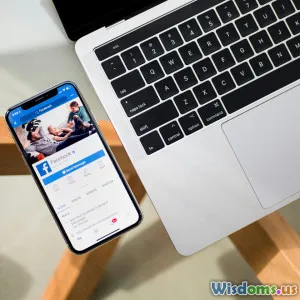
Success Stories Of Startups Using React Native
14 min read Explore inspiring success stories of startups leveraging React Native to build scalable, efficient apps and disrupt industries. (0 Reviews)
Success Stories Of Startups Using React Native
The mobile app landscape has evolved rapidly over the past decade, fueled by consumers’ insatiable demand for sleek interfaces, seamless performance, and swift innovation. Amid this shifting terrain, React Native has emerged as a powerful catalyst for technical agility, helping ambitious startups break into competitive industries. Let’s explore how startups have leveraged React Native not just for cost-saving and swift iteration, but as a foundation for runaway success.
Born for Speed: Why Startups Choose React Native

Launching a mobile app is a race against time. For startups, releasing a Minimum Viable Product (MVP) quickly is crucial—feedback must flow and pivots must be rapid. React Native, an open-source framework from Facebook, enables cross-platform mobile development using JavaScript and React principles. Apps built with React Native share up to 90% of code between iOS and Android, slashing both cost and time-to-market.
Key competitive advantages for startups include:
- Unified development: A single codebase powers iOS and Android.
- Rapid prototyping: MVPs can be built, launched, tested, and tweaked in weeks, not months.
- Resource efficiency: Small teams manage large ambitions by hiring full-stack JavaScript engineers instead of separate iOS and Android specialists.
Case in Point: Shine
Shine, a self-care and wellness app started in 2016, chose React Native from the outset. Facing competitors with massive budgets, Shine’s founding team needed a quick yet high-quality launch. React Native allowed them to:
- Build both iOS and Android apps with a team of just five engineers.
- Iterate weekly based on user engagement metrics.
- Scale from concept to 6M+ downloads in under three years.
CEO Naomi Hirabayashi highlights that using React Native allowed Shine to “focus resources on delivering evidenced-based, high-quality content, rather than wrestling with multiple codebases.”
Funding and Growth: How React Native Helped Startups Woo Investors

Securing funding depends on more than a big idea. Investors expect to see real traction: working demos, early adopters, actionable insights.
React Native apps offer startups a critical advantage: visually polished, production-grade MVPs that impress investors.
Example: Gyroscope
Gyroscope, a health and activity tracking startup, used React Native to demo a sophisticated multi-platform product within only three months. This meant they were able to show seamless data-sync, device integration, and native transitions to prospective backers. Their MVP helped:
- Secure an initial seed round of $1.3 million.
- Land early partnership deals with established fitness companies.
- Spotlight their engineering agility in investor pitches.
Actionable Advice:
- Use React Native’s out-of-the-box components** (like navigators, alerts, and lists) to get apps investment-ready much faster.
- Leverage libraries such as Lottie and React Native Paper for delightful UI/UX with minimal custom code.
Scaling Faster with a Small Team

As startups break through MVP stage, they must scale up features, user base, and team size—often under tight budgets.
Take Wynd, a smart air quality monitoring startup founded at MIT. Early on, Wynd knew its software had to control real-time IoT hardware on both iOS and Android. The React Native framework allowed them to:
- Reuse business logic and device APIs across platforms.
- Simplify testing and debugging (single bug fix = resolved for all platforms).
- Grow software output while keeping the core app team under 10 engineers.
Their effort paid off: By the time Wynd’s air purifiers caught media attention during international wildfires, the team was able to roll out new features and critical performance updates simultaneously for all users—critical for IoT devices, where reliability is mandatory.
Pro Tip for Scaling:
- Continuous Integration Tools: Use Fastlane and Bitrise, both well-supported by React Native, for streamlined app builds and releases.
Lessons in Real-World Performance and User Experience

A typical concern about cross-platform frameworks is performance: Can React Native apps match the native feel?
YES—with the right approach.
Case Study: Chime
Chime, the US-based neobank, built its early mobile banking experience with React Native. Handling sensitive financial data and transactions, they needed both bulletproof reliability and a flawless UX. Their strategy:
- Architecture: Offloading computation-heavy features to native modules where needed, while 90% of screens and navigation ran via React Native.
- Analytics: Implementing generous mobile analytics, error-tracking (using tools like Sentry), and A/B testing capabilities to quickly spot and resolve bottlenecks.
Result: Users rated Chime apps 4.7+ stars on both app stores—the combined speed and polish was a prime factor behind their explosive membership growth, attracting over 12 million account holders within five years.
Pro Tips:
- For seamless gestures and native-like fluidity, use libraries like Reanimated and Gesture Handler.
- Profile performance early using Flipper and react-native-performance to uncover slow screens or memory leaks.
Launching Global: Locales, Languages, and Features at Scale

Internationalization can be daunting for small teams—but React Native’s extensible codebase makes it tractable from day one.
Example: iFood
iFood, originally a Brazilian food delivery startup, quickly rose to dominate over a third of Latin America’s food delivery market. Powered in large part by its React Native mobile app, the team was able to:
- Add localizations for Spanish, Portuguese, and dozens of regional dialects from the same codebase.
- A/B test localized feature variations and promotions—dynamically pushing tailored content based on region.
- Integrate with diverse payment providers and hardware unique to Latin American markets.
Best Practices:
- Use the react-i18next package to manage translations and dynamic locale switching.
- Modularize feature flags using launchdarkly-react-native-client-sdk for region-specific rollouts.
Surpassing Native with Modern Integrations

Modern startups often rely on a host of third-party tools for analytics, payments, location, push notifications, and more. The React Native ecosystem isn’t just robust—it’s growing rapidly with support for every vital integration.
Concrete Example: Brex
Brex, the corporate spend platform, used React Native for its entire mobile experience. Their secret weapon wasn’t just unified code—it was their ability to stitch together a best-of-breed experience, adding:
- Biometric authentication (TouchID, FaceID) for speedy yet secure login.
- Real-time card alerts and travel notifications using deep integration with native push systems.
- Bonus: Brex could test features like receipt-scanning OCR via modular native plugins—shipping upgrades across platforms in days.
Advice for Founders:
- Write or wrap native modules (in Swift/Kotlin) when essential leads arise—no need to compromise on blazing-edge features!
- Tap into the thriving React Native Directory for vetted plugins across payments, auth, maps, AR, and more.
Overcoming Obstacles: Debugging and Evolving Your React Native Codebase

Every evolving project faces growing pains, and bold startups are no strangers to technical debt. The unique shape of React Native’s hybrid platform introduces both opportunities and unique debugging quirks.
Case: Discord
Discord’s mobile app, used by millions daily, is largely written in React Native. Their experience holds powerful lessons:
- With usage on massively different devices, Discord invested early in modularizing its codebase.
- They built custom overlays atop React Native’s default developer tools, supporting advanced debugging and in-app issue reporting.
- At critical moments (like adding video calling), they migrated specific performance-heavy sections to pure native code—underscore that React Native does not have to be all-or-nothing.
Recommendations:
- Adopt a robust state management system (Redux Toolkit, Recoil, or Zustand) to keep logic tidy.
- Invest in CodePush for over-the-air (OTA) bug fixes—cut user downtime drastically!
From Idea to Unicorn: Startups Dominating Markets with React Native

Many of today’s unicorn startups—valued at $1B+—owe their rapid rise in part to React Native. The flexibility to experiment, remodel features, and conquer entire new geographies has been a recurring theme.
Unicorn Example: Coinbase
Early on, the Coinbase team grappled with the challenge of offering a secure, frictionless crypto trading experience on all major platforms. They adopted React Native to:
- Synchronize security features and wallets across iOS/Android instantly after compliance pushes.
- Integrate bleeding-edge APIs (blockchain-provider plugins updated often!) using hybrid native modules, without slowing the broader team.
- Iteratively roll out new features as the industry evolved—from simple storage to live crypto trading, NFTs, and rewards.
The take-home lesson: In hyper-competitive domains, React Native grants product teams leverage—pushing the market and keeping a credible position among ever-bigger rivals.
Actionable Framework for Ambitious Startups
React Native has powered the climbs of industries most disruptive new players, but to get the most from the framework:
- Start with UX parity—Users expect flawless, native-quality UIs. Polish before MVP launch.
- Automate builds & deploys—Set up CI/CD pipelines from day one for agile iteration.
- Modularize, then optimize—Design code so hot-path components can be swapped with native code when ready.
- Leverage talent efficiency—Hire versatile engineers; encourage front-end and back-end co-ownership.
- Continuously monitor and evolve—Use analytics to proactively spot and fix bottlenecks as your user base grows.
The Road Ahead: Is React Native the Best Bet for Startups?

React Native continues to gain momentum as Facebook, Microsoft, Shopify, and a global open-source community invest heavily in its future. Yet, it's not just brand giants who benefit—startups armed with React Native are launching, pivoting, and scaling at an unprecedented pace.
Whether building an MVP, courting investors, launching worldwide, or eventually expanding to unicorn scale, React Native has transitioned from a toolkit for scrappy challengers to the success engine behind many of their brightest stories. Aspiring startups should take inspiration—and perhaps pick React Native as the lever to their own breakout moment.
Rate the Post
User Reviews
Popular Posts



















